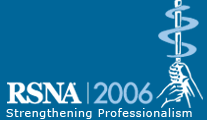
Abstract Archives of the RSNA, 2006
Rivka Rachel Colen MD, Presenter: Nothing to Disclose
Kevin R King, Abstract Co-Author: Nothing to Disclose
Hima Prabhakar MD, Abstract Co-Author: Nothing to Disclose
Peter Raff Mueller MD, Abstract Co-Author: Consultant, Cook Group Incorporated, Bloomington, IN
Alan Fischman, Abstract Co-Author: Nothing to Disclose
Michael Austin Blake MBBCh, Abstract Co-Author: Nothing to Disclose
To evaluate the significance of the incidental finding of FDG uptake within the esophagus. We sought to 1) evaluate the prevalence of this phenomenon, 2) categorize the nature of uptake and 3) determine the clinical significance of unexpected FDG uptake within the esophagus.
We retrospectively reviewed 291 out of 4750 patients with abnormal esophageal FDG uptake on whole body PETCT and PET scans who had associated endoscopic and/or pathological evidence of disease or no disease. 271 patients were excluded for prior primary esophageal cancer or known esophageal metastasis. Location was characterized as proximal, middle, or distal; distribution as diffuse >7cm, segmental 3-7cm, or focal <3cm; uptake as eccentric or concentric; and homogeneity as homogenous or heterogeneous. Two attending radiologists and a radiology resident(R1, R2, R3) were blinded to the diagnosis and reviewed sets of PETCT and PET images retrospectively, to categorize the uptake based on location, distribution, and morphology.
The prevalence of FDG uptake in the esophagus was 6.1% 291/4750). 7% (20/291) met the inclusion criteria. 20 % (4/20) were malignant esophageal tumors and demonstrated homogeneous intense uptake. 15%(3/20) showed a normal esophagus on endoscopy. 65% (13/20) had endoscopic and/or pathologic evidence of esophagitis. 10/13 (77%) had reflux esophagitis. Of these 10, 6 demonstrated heterogeneous low intensity segmental uptake in the distal esophagus. 5/6 had ancillary CT findings of a patulous esophagus and/or circumferential wall thickening. 1 patient was diagnosed with candida esophagitis and demonstrated diffuse homogeneous high intensity uptake throughout the entire esophagus. 2 patients had radiation esophagitis and low level segmental esophageal uptake.
Classification of FDG uptake in the esophagus may be helpful to further characterize lesions that should be viewed with suspicion and therefore endoscopy and biospy should be further done to evaluate.
Classification of FDG uptake in the esophagus may be helpful to further characterize lesions that should be viewed with suspicion and therefore endoscopy and biospy should be further done.
Colen, R,
King, K,
Prabhakar, H,
Mueller, P,
Fischman, A,
Blake, M,
Significance of Incidental 18F-FDG Uptake in the Esophagus in PET/CT and PET: Correlation with Endoscopic and/or Histopathologic Analysis. Radiological Society of North America 2006 Scientific Assembly and Annual Meeting, November 26 - December 1, 2006 ,Chicago IL.
http://archive.rsna.org/2006/4442064.html

